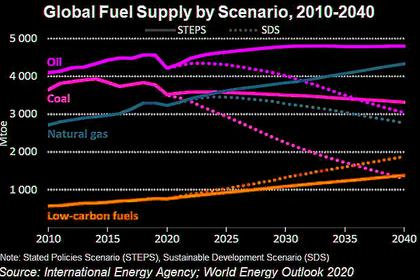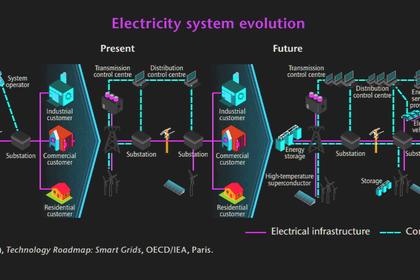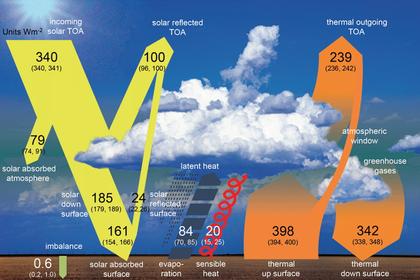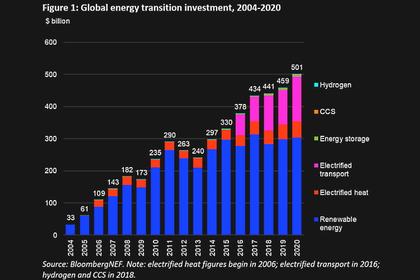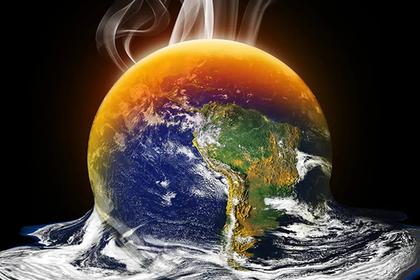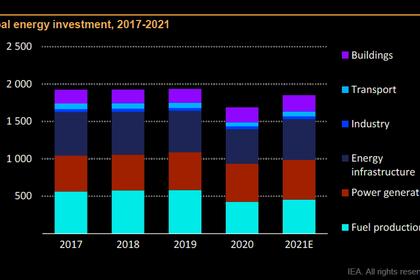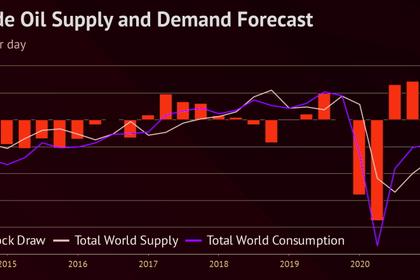
GROWTH IN GLOBAL ENERGY DEMAND 28%
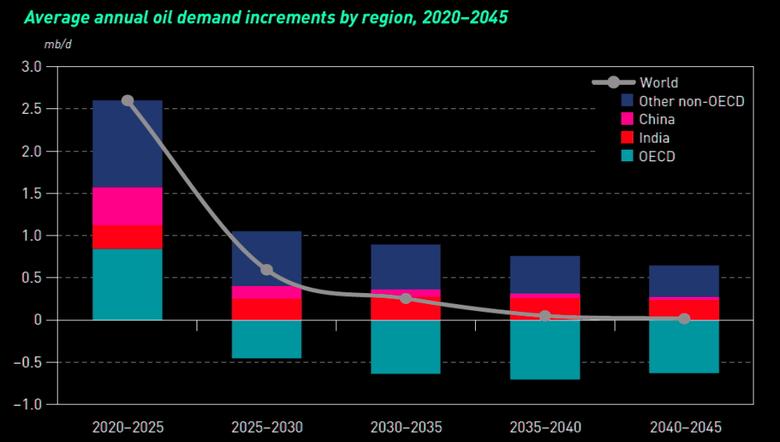
OPEC - 28 Sep 2021 - The 2021 OPEC World Oil Outlook (WOO) was launched today in Vienna, Austria. The 15th edition of the WOO presents an in-depth review of the OPEC Secretariat’s ongoing analysis of the impacts of the COVID-19 pandemic, and contains medium- and long-term projections for the global oil and energy industry.
This includes analysis of the industry’s various linkages and its shifting dynamics, providing insights into energy and oil demand, oil supply and refining, the global economy, policy and technology developments, demographic trends, environmental issues and sustainable development concerns.
In the foreword to the publication, His Excellency Mohammad Sanusi Barkindo, OPEC Secretary General said that the past year has been one of continuing uncertainty related to the pandemic, but noted the benefits of the Declaration of Cooperation (DoC) production adjustments in bringing down inventory levels, and the market being buoyed by the rollout of vaccines and further global fiscal stimulus.
He also personally thanked OPEC Secretariat staff for the hard work, drive and steadfastness of all those that have been involved in producing the WOO. “For the second year it has not been an easy task, given the restrictions on office-based working, but I salute each and every one of you for your dedication and commitment to delivering this flagship annual publication.”
It is important to reiterate that the Outlook is not about making predictions. The WOO should be viewed as a helpful and insightful reference tool, one that underscores the Organization’s commitment to knowledge sharing and data transparency. It also emphasizes OPEC’s continued focus on the enhancement of dialogue and cooperation, most recently through the historic DoC and the Charter of Cooperation between 23 OPEC and non-OPEC producers, as a means to help secure a sound and stable oil industry.
The WOO 2021 can also be accessed on two digital interfaces, the OPEC WOO App available for both Android and iOS, and a comprehensive interactive version, which can be accessed at woo.opec.org
Some specific highlights from this year’s WOO include:
- The year 2020 saw the largest ever global drop in energy and oil demand, but 2021 has witnessed a significant rebound as vaccines were rolled out, lockdowns were eased, mobility increased, economies opened up further, and fiscal and infrastructure packages were implemented.
- Total primary energy demand is set to expand by a robust 28% in the period to 2045.
- All forms of energy will be needed to support the post-pandemic recovery in a sustainable way, balancing the needs of people in relation to their social welfare, the economy and the environment.
- ‘Other renewables’ – combining mainly solar, wind and geothermal energy – see the largest growth in both absolute and percentage terms, leading to a share over 10% by 2045. Gas witnesses the second largest increase in absolute terms.
- Oil is expected to retain the largest share of the energy mix throughout the outlook period, accounting for just over a 28% share in 2045.
- All major fuel types witness growth, with the exception of coal.
- Global oil demand is forecast to reach 108.2 mb/d by 2045, from a low of 90.6 mb/d witnessed in 2020.
- The non-OECD drives oil demand with growth of 25.5 mb/d by 2045 (compared to 2020), whereas the OECD region is expected to contract by 7.9 mb/d.
- India is expected to be the largest contributor to incremental demand, adding 6.5 mb/d between 2020 and 2045.
- Oil demand in road transportation will continue to dominate the sectoral breakdown, increasing by 6.3 mb/d over the forecast period, with the total vehicle fleet (passenger and commercial vehicles) set to expand by over 1.1 billion by 2045 to around 2.6 billion.
- The long-term share of alternative fueled vehicles in the total fleet is projected to reach a level of around 24% in 2045, but conventional vehicles remain dominant.
- Oil demand in the aviation sector was most affected by COVID-19 restrictions in relative terms, but it is projected to recover in the long term with an expected expansion of 5.8 mb/d out to 2045.
- Non-OPEC liquids supply is expected to continue its recovery and grow by 7.5 mb/d from its 2020 low to 70.4 mb/d in 2026, driven by US tight oil, as well as barrels from Brazil, Russia, Guyana, Canada and Kazakhstan.
- After US supply peaks at 20.5 mb/d around 2030, total non-OPEC liquids supply is also expected to decline, reaching 65.5 mb/d in 2045.
- OPEC liquids, which recover to pre-pandemic levels by around mid-decade, rise strongly thereafter, reaching nearly 43 mb/d in 2045. In terms of market share, this implies an increase from 33% in 2020 to 39% by 2045.
- Estimated refining capacity additions in the medium-term are a robust 6.9 mb/d, while another 7.1 mb/d of incremental capacity is required in the long-term, predominantly in developing countries.
- Refinery capacity closures of 4.5 mb/d between 2020 and 2026, mostly in developed countries, will help to balance out the downstream market in the medium-term.
- After the 2020 drop, global inter-regional crude and condensate trade is projected to recover and reach levels above 38 mb/d in 2025, and increase further to above 40 mb/d from 2035 onwards.
- The Asia-Pacific region is the main outlet for crude and condensate imports, increasing from 23.5 mb/d in 2019 to almost 30 mb/d in 2045. The Middle East remains the largest supplier to this region, increasing exports by 4.8 mb/d over this period.
- Cumulative oil-related investment requirements amount to $11.8 trillion in the 2021-2045 period. Of this, 80%, or $9.2 trillion is in the upstream, with another $1.5 and $1.1 trillion needed in the downstream and midstream, respectively.
- The pandemic has affected United Nations climate change and sustainable development processes, with implications for the implementation of the Paris Agreement and the 2030 Agenda.
- Enhanced global cooperation could allow for a more coherent, balanced and integrated approach for realizing the Paris Agreement and interlinked Sustainable Development Goals.
- Technological advancements are set to shape the global energy landscape and the world needs to look for cleaner and more efficient technological solutions everywhere, across all available energies.
- Uncertainties related to the outlook for oil demand and supply are abundant, and will need to be closely monitored.
-----
Earlier:
